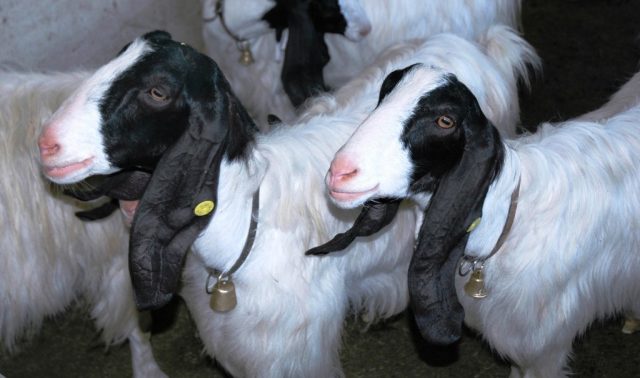Type the name of the breed you're looking for below
[wpdreams_ajaxsearchlite] Don't see the breed your're looking for? Click here and let us know!
Maltese goat
| Place of Origin | Turkey |
| Origin | The Maltese is a breed of domestic goat from the east and central Mediterranean area. It originates in Asia Minor, and takes its name from the island of Malta. It is raised mainly in southern Italy, and particularly in the islands of Sicily and Sardinia. Although the Maltese: Mogħża Maltija is reported to DAD-IS, the official view is that there are no pure-bred specimens of the breed in the Maltese islands, although it is possible that some modern Maltese goats are closely related to the original type. The Maltese is also present in Greece, Turkey and the Maghreb. |
| Purpose | Milk |
| Characteristics | The Maltese is a long-haired white goat characterised by a raven-black area on the top and sides of the head and long pendulous black ears which turn outwards at the tip. Weight Male: 70 kg (155 lb) Female: 46 kg (100 lb) Height Male: 87 cm (34 in) Female: 71 cm (28 in) Skin colour: pinkish white, dark where the coat is black Wool colour: white Face colour: white with black sides, black crown and black ears Horn status: sometimes horned Beard: males usually bearded Tassels: may be present |
| Other Considerations | In Italy, the Maltese is one of the eight autochthonous Italian goat breeds for which a genealogical herdbook is kept by the Associazione Nazionale della Pastorizia, the Italian national association of sheep- and goat-breeders. The herdbook was established in 1976. The Italian population of the breed was estimated in 1983 to be about 70,000, and in 2005 at 40,000. At the end of 2013 the registered population reported was 1934. The Maltese is a valued milk breed; the milk has pleasant taste without an excessively "goaty" odour or flavour. Yield per lactation is 242 ± 87 litres for primiparous, 307 ± 141 l for secondiparous, and 358 ± 160 l for pluriparous, nannies; it may reach 500–600 kg in 300 days. The milk has an average of 4.28% fat and 3.66% protein. In Sicily the milk is used to make ricotta and traditional caprino cheeses including Padduni, which has PAT status, and Formaggiu ri crapa. Kids are slaughtered at a weight of 8–11 kg |



